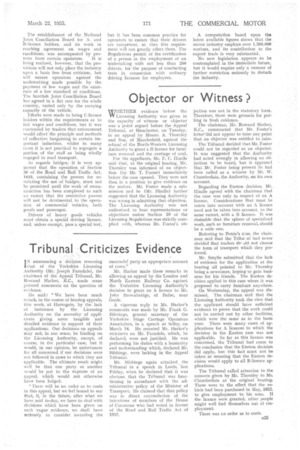The establishment of the National Joint Conciliation Board for Aand
Page 39

If you've noticed an error in this article please click here to report it so we can fix it.
fl-licence holders, and its work in reaching agreement on wages and conditions, was accompanied by pro
tests from certain operators. It is being realized, however, that the provisions will not only place the industry upon a basis free from criticism, hut will ensure operators against the undercutting made pOssible by the payment of low wages and the existence of a low standard of conditions. The Scottish Joint Conciliation Board has agreed to a flat rate for the whole country, varied only by the carrying capacity of the vehicle.
Efforts were made to bring C-licence holders within the requirements as to fair wages and conditions, but it was contended by traders that enforcement would affect the principle and methods of collective bargaining in certain important industries, whilst in many eases it is not practical to segregate a portion of the staff as being wholly engaged in road transport.
As regards bridges; it is very apparent that the operation of Section 30 of the Road and Rail Traffic Act, 1933, containing the powers for restricting the use of bridges,. must not be permitted until the work of reconstruction has been completed to such an extent that the restrictive powers will not be detrimental, to the operation of commercial vehicles, both goods and passenger.
Drivers of heavy goods 'vehicles must obtain a special driving licence, and, unless exempt, pass a special test, but it has been common practice for operators to ensure that their drivers Are competent, so that this requirement will not greatly affect them, The Regulations permit of the certification of a person in the employment of an undertaking with not less than 250 drivers, for the purpose of conducting tests in connection with ordinary driving licences for employees. A computation based upon the latest available figures shows that the motor industry employs over 1,250,000 workers, and its contribution to the export trade is very substantial.
No new legislation appears -to be contemplated in the immediate future, but it would require only a rumour of further restriction seriously to disturb the industry.




























































































